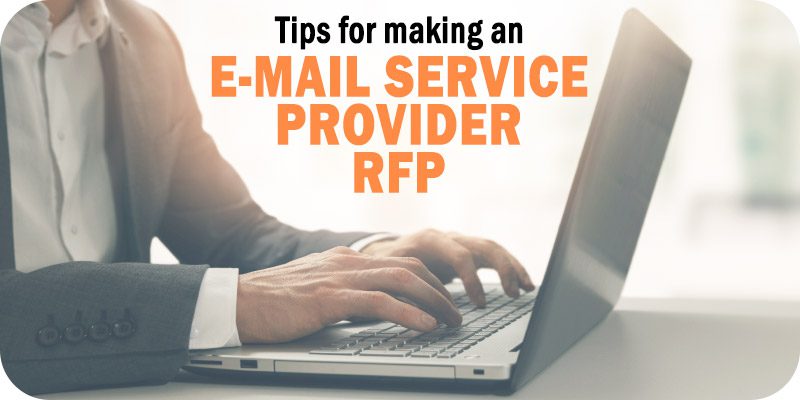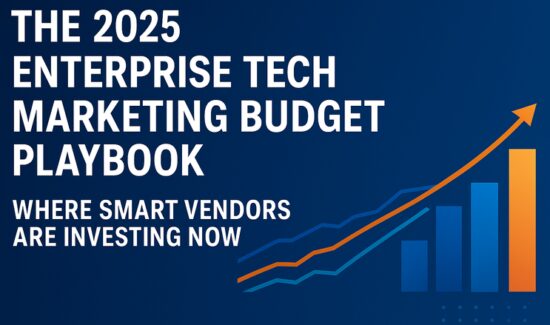3 Tips to Keep in Mind When Making Your Next Email Service Provider RFP


As part of Solutions Review’s Contributed Content Series—a collection of contributed columns written by industry experts in maturing software categories—Jeff Haws, the Senior Content Marketing Manager of MessageGears, shares some tips to keep in mind when preparing for your next email service provider RFP.
Ah, the noble RFP—an acronym that’s so well known in email marketing that it barely needs an introduction. To be sure, we’re talking about the Request For Proposal—the document marketers write and distribute to potential vendors that “invite” them to audition for their business. RFPs have long been a staple in selecting an email service provider (ESP). Every company needs one—yet every company’s needs vary. And while we may think of email as a commodity channel, there are a ton of ESPs—and they are not all the same.
That’s true now more than ever, as savvy digital marketers integrate email throughout their martech stack and customer data—not just for online interactions but in physical locations. Throw in personalization, render-on-open, audience segmentation, and other strategies that email superstars leverage. So why are you still sending out that generic RFP that’s long on assumptions and short on your actual goals?
RFPs might seem routine, but this mindset leads to missed opportunities. Your RFP is a crucial step in identifying not just any email provider but a great email provider—one that can help you deliver outsized results. But we see marketers take a run-of-the-mill approach, leading to run-of-the-mill proposals that aren’t helping you hit your goals.
With that in mind, here are three actionable tips you can use to make your next RFP shine.
1) Focus On What You Need To Do With Email Today
Too many marketers write RFPs that are way too general. Be specific: What do you need to do with your email program? Your RFP shouldn’t “think aloud” about what you might do or what tools you think you need. Nor should it make many assumptions about technology or an ESP’s capabilities. Instead, your job is to state what you need to be able to do as specifically as possible. It’s the ESP’s job to tell you how they can help you achieve that.
Watch out for overly general/outdated language or language that restricts vendors in how they respond. This is especially true in the questions you ask—avoid writing them in a manner that assumes too much about a vendor’s capabilities or assumes all vendors do roughly the same thing. Be detailed about what you want without making assumptions about what you think is possible. That’s much more likely to lead to an optimal match than “just another vendor.” And that should be one of your primary aims in this process.
2) Don’t Recycle Your Last RFP
Let’s face it: Writing an RFP isn’t the most exciting part of a marketer’s job. There are probably other things you’d instead tackle on your to-do list, which means it might also be tempting to dust off an older RFP from a previous process, say, five years ago, and essentially reuse it. It might even seem efficient. It’s a bad idea. The martech landscape changes frequently and quickly. If you’re using an old RFP, you’ll get matched up with old tech and miss out on capabilities and companies that might be a game changer for your program.
Moreover, your needs have almost certainly changed since the last time you conducted an RFP process—if not, you probably wouldn’t be doing a new one. Re-evaluate your needs from scratch, and build your RFP from the ground up. It’s worth it. That’s especially true if you weren’t thrilled with the results of your last process—a recycled or one-size-fits-all RFP might be one reason.
If you’re tempted to reuse a previous RFP to save time, consider hiring short-term help instead. Many consultants know the industry, the providers, and the process. Better to get help writing an RFP that reflects your needs today than to recycle an RFP from yesterday.
3) Reach Beyond the Big Players
Nobody gets fired for hiring one of the biggest, best-known ESPs. Pull one off the shelf, turn it on, and you’re done. Even if it doesn’t work out, no one will blame you—you went with the “safe” name that everyone’s heard of. It’s a hard mentality to shake. The industry is constantly evolving, though. Considering the big names means you’re missing out on many potentially great options.
Dig deeper, and do some research. Ask marketing peers in other organizations. Try the Email Geeks Slack or other industry chats and communities. If you’re using a consultant to assist with the RFP, ask them to broaden your horizons. Depending on the particulars of your company goals, there might be a provider whose niche aligns with your business.
You can still include and consider the household names—go for it! But cast a wider net, and keep an open mind. The email service provider landscape is more diverse and exciting than you might think. Narrowing the field too much at the RFP stage might mean you miss out on a company (or three) that will amaze you. That’s ultimately the goal of a good RFP: Gather the best information you can about your options to make an intelligent choice that delivers maximum results.




















